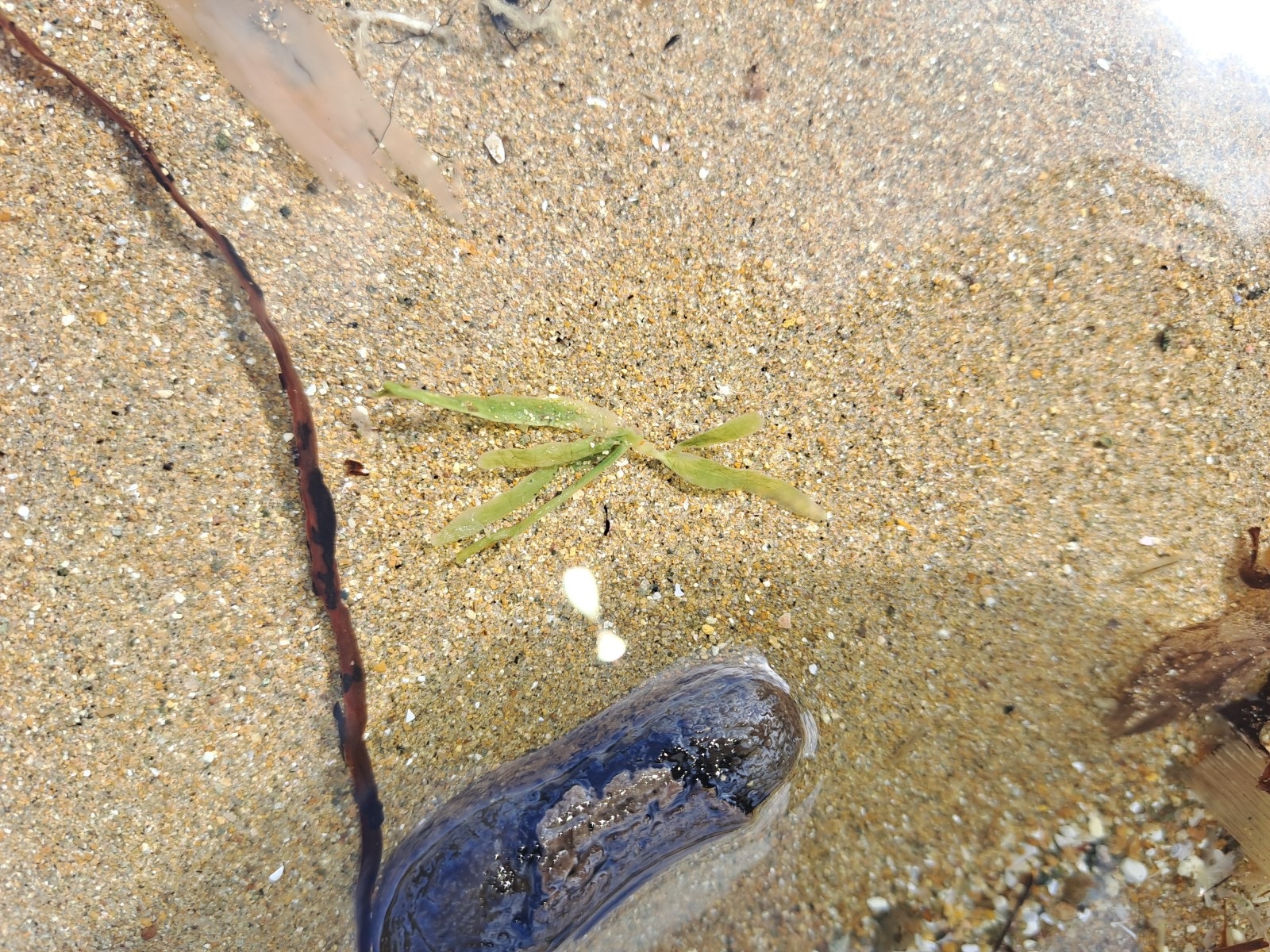Two species of exotic caulerpa seaweed (Caulerpa brachypus and Caulerpa parvifolia) have been found in the Auckland region. These exotic caulerpa can spread rapidly, forming vast, dense underwater fields.
The Ministry for Primary Industries is leading the response to exotic caulerpa, working closely with mana whenua, community groups, Department of Conservation and, in Tāmaki Makaurau, with Auckland Council’s marine biosecurity team.
One of the locations in Auckland that caulerpa has been found is Aotea Great Barrier Island, where the Aotea/Great Barrier Local Board is closely involved as well.
Aotea Great Barrier Island incursion
Exotic caulerpa was first detected in at Okupu/Blind Bay by a resident and ecologist in June 2021. There are extensive areas of exotic caulerpa that extend from Tryphena, into Okupu/Blind Bay and Whangaparapara, and through to the entrance of Port Fitzroy.
And now, caulerpa has also been detected at Medlands Beach on the east coast of the island – thanks to the vigilance of Auckland Council Biosecurity Advisor Karen Thode.
A keen eye
Karen recently joined Auckland Council as a Biosecurity Advisor, Pest Free Warrants. Our pest free warrants for commercial transport operators are designed to reduce the risk of pest invasion and spread to the Hauraki Gulf Islands. It focuses on rats, skinks, mice, Argentine ants and the pathogen that causes kauri dieback.
“One of my favourite pastimes is beachcombing, I quite often take photographs of random things and wildlife while out walking. On this day I was enjoying an after-work walk along Medlands Beach on Aotea Great Barrier Island taking photos,” says Karen.
“I was showing some photos I had taken of the kākā to my colleague Liz Brooks and then another photo of an unusual seaweed which had caught my eye. Liz quickly recognised the weed in the photo as caulerpa.”

The photo was sent to Biosecurity New Zealand via its online reporting tool. The image was then provided to NIWA’s Marine Invasives Taxonomy team who confirmed it as one of the two exotic caulerpa species found at Aotea.
Further searching of the beach by Auckland Council staff failed to turn up any other beach cast caulerpa. The council’s marine biosecurity team have since gone back with DOC to undertake remote operated vehicle and towed underwater camera surveillance to help provide more information to Biosecurity New Zealand on this potential new location.
They did not find any further presence of exotic caulerpa under the water and any further signs of caulerpa at this location will be followed up.
“It’s important that anyone in Auckland report any sightings no matter how small or insignificant it may seem at the time,” says Karen.
“All beach goers can be part of the mahi to look after our precious Hauraki Gulf for future generations. Reporting and sending photos may seem like a small part but it plays a pivotal role in protecting and maintaining our Hauraki Gulf.”
What should I do if I find exotic caulerpa?
If you bring it up (on your anchor or hook), bag it and bin it! This means securing it safely on board in a bag or container, and bin it (dispose of it safely, away from the water, for instance in your household rubbish bin or compost).
If you find it on the beach, pin, pic, and phone. That is – note the location, take a photo, and report on 0800 80 99 66 or at report.mpi.govt.nz.


